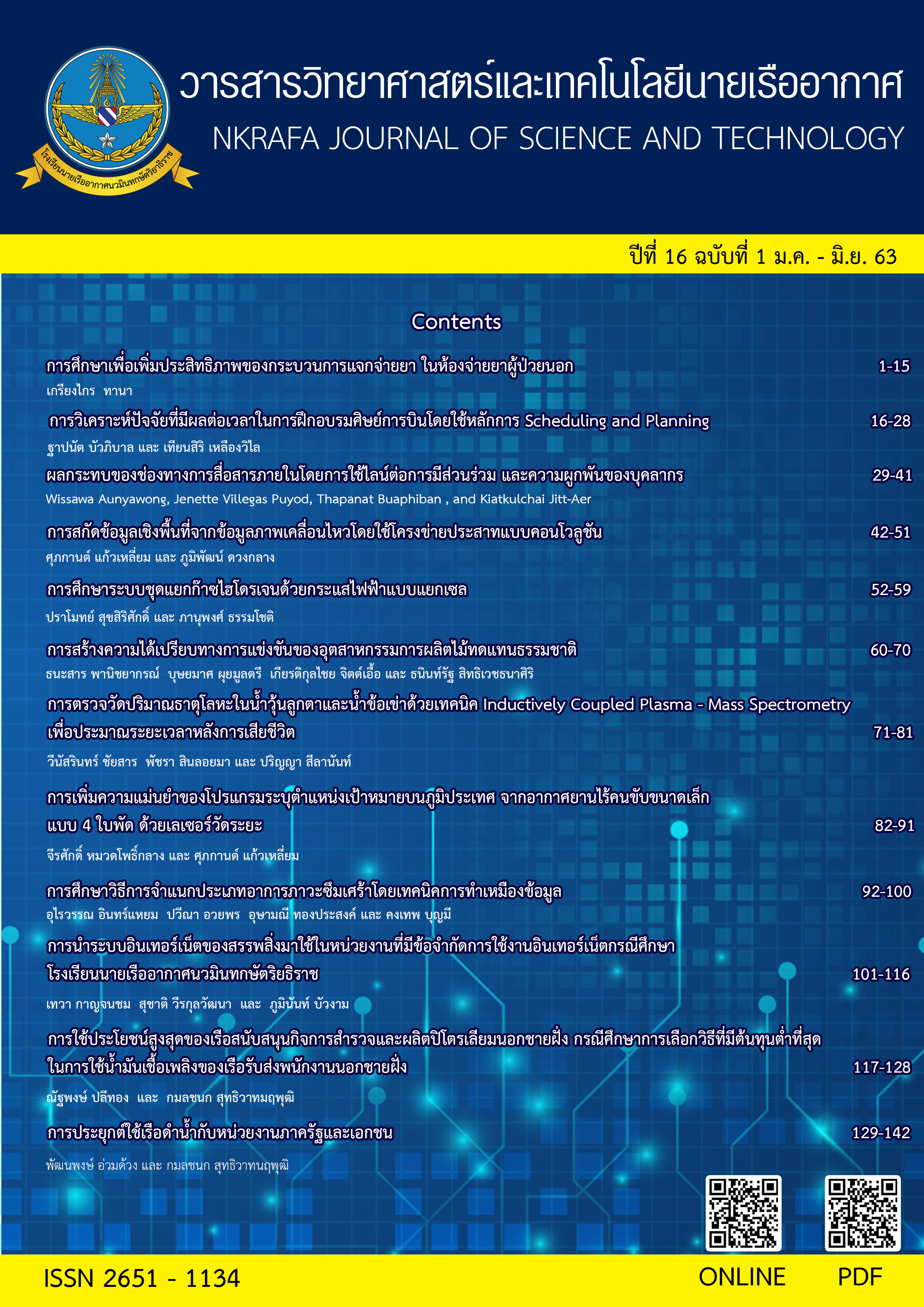Study a separate of hydrogen gas to use as energy in the engine
Main Article Content
Abstract
The world is facing more toxic environmental problems because of the extravagant energy consumption as well as the large amount of carbon dioxide that results in global warming. The research team has therefore studied the use of renewable energy to reduce the use of fossil fuels. By studying the separation of hydrogen from water, found that when increasing the voltage in the electric circuit, the electrolyte solution also has increased conductivity with maximum electric current of 12 amperes. When the sodium hydroxide solution is more concentrated, the rate of hydrogen gas also increased. The maximum hydrogen rate is 721 cc per minute. Comparing the number of cells used to separate the gas, the result is an increase in the number of cells resulting in an increased tendency of hydrogen gas, and studied the application of the gas to be used as energy in the engine. The calculation shows that Gas produced is not enough to power the engine. Therefore, for the occurrence of hydrogen gas, it should be mixed with gasoline or imported into storage tanks for further use.
Article Details
- Content and information in articles published in NKRAFA Journal of Science and Technology are comment and responsibility of authors of articles directly. Journal editorial do no need to agree or share any responsibility.
- NKRAFA Journal of Science and Technology Articles holds the copyright of the content, pictures, images etc. which published in it. If any person or agency require to reuse all or some part of articles, the permission must be obtained from the NKRAFA Journal of Science and Technology.
References
การผลิตและการประยุกต์ใช้.วารสารวิชาการ
เทคโนโลยีอุตสาหกรรม, 9(2): 116-126.
[2] รัชนีกร วันจันทึก. (2554). ก๊าซไฮโดรเจน : ความ
คาดหวังเพื่อเป็นแหล่งพลังงานที่ยั่งยืน. วารสาร
วิทยาศาสตร์บูรพา, 16(1) : 131-140.
[3] ศิชารัชย์ ประเสริฐศรี และคณะ. (2554). รายงาน
โครงการวิจัย เรื่อง การพัฒนาระบบชุดแยกก๊าซออกซี่
ไฮโดรเจนเพื่อใช้เป็นพลังงานในเครื่องยนต์. สาขา
วิศวกรรมเครื่องกล โรงเรียนนายเรืออากาศนวมินท
กษัตริยาธิราช.
[4] Bent, S. (2008). Renewable Energy Conversion,
transmission and storage. San Diego, United States: Elsevier Science Publishing Co. Inc.
[5] อุตส่าห์ จิรากร และคณะ. (2560). เครื่องยนต์สันดาป
ภายใน. พิมพ์ครั้งที่ 13. กรุงเทพมหานคร: ซีเอ็ดพับ
ลิสซิ่ง.
[6] Quakernaat, J. (1995). From hydrogen economy to
hydrogen civilization. International Journal of
Hydrogen Energy, 20: 485-492.
[7] Maclean, H.L., & Lave, L.B. (2003). Evaluating
automobile fuel/propulsion system technologies.
Progress in Energy and Combustion Science, 29:
1-69.
[8] Bimbela, F., Oliva, M., Garcia, L., & Arauzo, J.
(2009). Catalytic steam reforming of model
compounds of biomass pyrolysis liquids in fixed bed:
acetol and n-butanol. Journal of Analytical and
Applied Pyrolysis, 85: 204-213.
[9] Nahar, G.A., & Madhani, S.S. (2010). Thermodynamics of hydrogen production by the steam reforming of butanol: Analysis of inorganic gases and light hydrocarbons. International Journal of Hydrogen Energy, 35: 98-109.
[10] Zeng, K., & Zhang, D. (2010). Recent progess in
alkaline electrolysis for hydrogen production and
applications. Progress in Energy and Combustion
Science, 36: 307-326.
[11] ไพรทูล ไชยวงศา และคณะ. (2560). การเปรียบเทียบพารามิเตอร์ต่าง ๆ ที่มีผลต่อการเกิดก๊าซไฮโดรเจนที่ใช้เป็นเชื้อเพลิงร่วมสำหรับเครื่องยนต์แก๊สโซลีน. SAU Journal of Science & Technology, 3(2): 30-40.


